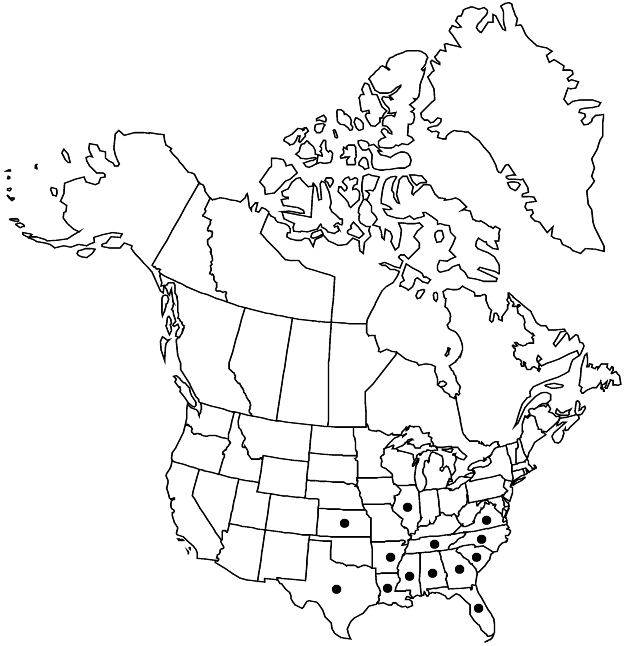Phyllanthus urinaria subsp. urinaria
Herbs, annual, monoecious, 1–5 dm; branching phyllanthoid. Stems: main-stems angled, not winged, glabrous; ultimate branchlets compressed, winged, hirsutulous. Leaves on main-stems spiral, scalelike; stipules auriculate, pale green. Leaves on ultimate branchlets distichous, well developed; stipules auriculate, pale green; blade usually oblong or oblong-obovate, sometimes linear, 6–25 × 2–9 mm, base obtuse, apex acute to obtuse and mucronulate, abaxial surface hispidulous near margins, adaxial surface glabrous, margins hispidulous. Inflorescences cymules or flowers solitary, unisexual, proximal with 1 pistillate flower, distal with 5–7 staminate flowers. Pedicels: staminate 0.1–0.2 mm, pistillate spreading in fruit, 0.3–0.5 mm. Staminate flowers: sepals 6, white, flat, 0.3–0.5 mm; nectary extrastaminal, 6 glands; stamens 3, filaments connate throughout. Pistillate flowers: sepals 6, yellowish green, sometimes suffused with red, flat, 0.6–0.9 mm, 1-veined; nectary annular, unlobed. Capsules 2–2.2 mm diam., ± tuberculate. Seeds uniformly brown, 1.1–1.2 mm, transversely ribbed, often with 1–3 lateral pits. 2n = 52 (West Indies).
Phenology: Flowering and fruiting year-round.
Habitat: Fields, gardens, roadsides, other disturbed areas.
Elevation: 10–500 m.
Distribution

Introduced; Ala., Ark., Fla., Ga., Ill., Kans., La., Miss., N.C., S.C., Tenn., Tex., Va., Asia, also in Mexico, West Indies, Central America, South America, Africa, Indian Ocean Islands, Pacific Islands, Australia
Discussion
Phyllanthus urinaria probably is native only to Asia; it is now found in tropical and subtropical regions worldwide, where it is aggressively weedy in disturbed sites. It was first reported in the United States in the 1940s and spread rapidly. It is unique among Phyllanthus species in the flora area in that the leaves are sensitive to the touch, folding like the leaflets of the sensitive plant, Mimosa pudica. Phyllanthus urinaria has a long history of use in folk medicine to treat a wide variety of ailments and is the subject of intense pharmacological research. Subspecies nudicarpus Rossignol & Haicour, is restricted to eastern Asia and is not weedy.
Selected References
None.
Lower Taxa
"elongating" is not a number."connate" is not a number."/2" is not declared as a valid unit of measurement for this property.